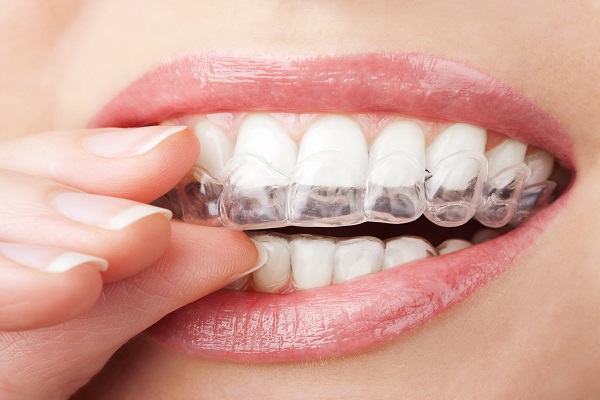Treatment Lengths with Clear Aligners

According to invisalign.com, Align Technology first introduced clear aligners in the United States in 1997. Throughout the years, the company has used research and cutting-edge technology to create new features, products, and materials to improve a patient’s smile. This method of teeth-straightening is ideal for many people. Some patients can complete their treatment in as few as six months; however, 12 to 18 months is the average time for most patients depending on various factors.
What factors affect treatment length
The first step in teeth-straightening treatment is a consultation. A potential patient meets with a dentist trained in Invisalign®. The dentist evaluates a patient’s smile using their expertise and a 3D scanner. Once this information is obtained, the dentist creates a plan specific to each patient. The length of treatment time varies depending on the complexity of the case and the compliance of the patient.
Complexity
There are many types of dental situations where Invisalign® is an ideal treatment solution:
- Slightly crooked teeth
- Crowded teeth
- Overbite
- Underbite
- Crossbite
- Gaps between teeth
- Open bite
A simple straightening situation, such as mildly crooked teeth, typically requires a shorter treatment time. A more complex situation, such as a severe overbite, may necessitate a longer treatment length. The dentist creates a digital plan that clearly shows how a patient’s smile will look at the end of treatment. Regardless of the length of treatment time, every patient should begin seeing results within a few weeks.
Compliance
After the consultation, the next step in teeth-straightening with clear aligners is having the unique aligners made. With Invisalign®, patients do not have to experience teeth molds thanks to advanced 3D imaging. The aligners are trimmed to fit a patient’s specific gum line and made with a comfortable material. A patient should start wearing them for at least 20 to 22 hours every day. It is important that patients leave the aligners in day and night and only remove them for eating, drinking, and brushing and flossing teeth.
About every one to two weeks, a patient begins wearing a new set of aligners. Each new set of aligners may create a bit of pain or pressure in a patient’s mouth; however, it is important to keep wearing each set as prescribed. A patient will have better results, and a shorter treatment time, if guidelines are followed. For aligners for teens, there are blue indicators to help parents see if the child is wearing them as directed.
Conclusion
Teeth straightening with Invisalign® is a great option for many individuals. Clear aligners allow patients to achieve a straighter smile more discreetly and with fewer complications due to no wires and brackets, unlike traditional braces. The average length of treatment time typically lasts anywhere from 12 to 18 months; however, each patient’s case is unique. Once the dentist creates a treatment plan, the particular alignment issue and the patient’s compliance with wearing the aligners determines the final length of time it takes to complete the process.
Request an appointment here: https://www.atlantisdentist.com or call Atlantis Dental Care P.A. at (561) 965-9988 for an appointment in our Atlantis office.
Check out what others are saying about our services on Yelp: Read our Yelp reviews.
Recent Posts
Invisalign® aligners are a type of appliance used in orthodontics. These transparent mouth trays are used to push your teeth towards a better alignment. That is the same principle that powers other devices used in orthodontics, like conventional braces. Gradually pushing on teeth leads to them slowly moving in the direction they are being pushed.…
Invisalign aligners are a popular form of orthodontics nowadays. Many patients prefer the discreet nature of these clear aligners over the conspicuous appearance of conventional metal braces. When braces were the only way to straighten teeth, adults and teenagers often avoided getting teeth straightening treatment so they would not have to deal with the look…
A dental filling can be used to repair cavities that form on teeth due to tooth decay. Fillings can also be used to rebuild teeth structures that have been compromised by tooth decay or to repair broken and worn-down teeth.Tooth decay is the result of oral bacteria feasting on food particles that are stuck on…
You may be wondering if an implant supported bridge or a traditional one is right for you. It is a good idea to know a few pros and cons of each one. For example, implants might last longer for you. Keep reading to find out more about getting an implant supported bridge.Bridges can cover gaps…


